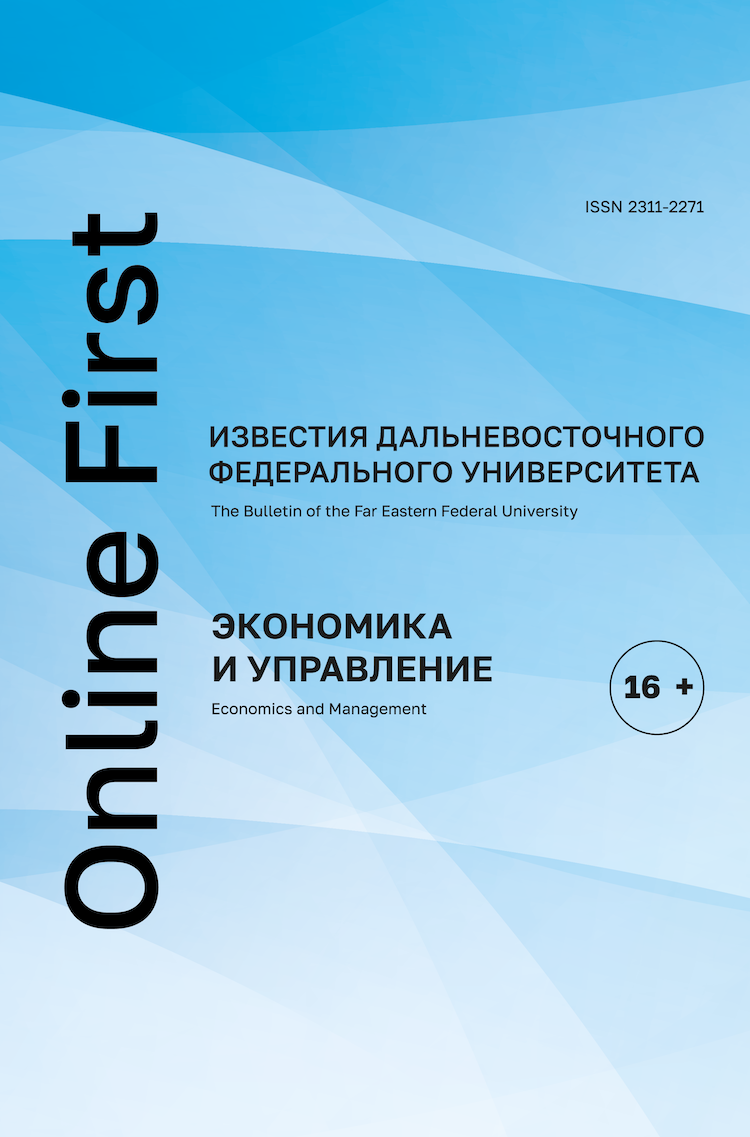Биосеквестрация как фактор развития предпринимательства в России
Аннотация
Ключевые слова
Литература
Center for climate and energy solutions. Bio-sequestration. Available at: http://www.c2es.org/technology/factsheet/bio-sequestration. (accessed 10.09. 2016) 2. Sayre R. Microalgae: the potential for carbon capture. Bioscience, 2010, vol. 60, pp. 722–727. 3. Stern T., Schwarzbauer P. Wood Products Certification, Consumer Behavior and its Climate Policy Potential. First International Conference on Resource Effi-ciency in Interorganizational Networks-ResEff, 2013, p. 440. 4. Measbah H., Tayebi Khorrami M., Ansari M., Dyanattalab G., & Samanian R. Comparison on carbon sequestration of soil and dominant plant species in inside and outside of Bamboo national park. 2013. 5. Noormets A., Epron D., Domec J.C., McNulty S.G., Fox T., Sun G., & King J.S. Effects of forest management on productivity and carbon sequestration: A re-view and hypothesis. Forest Ecology and Management, 2015, vol. 355, pp. 124–140. 6. de Moraes Sá J.C., Lal R., Cerri C.C., Lorenz K., Hungria M. and de Faccio Carvalho P.C. Low-carbon agriculture in South America to mitigate global cli-mate change and advance food security. Environment international, 2017, vol. 98, pp. 102–112. 7. Wells, Jon M., Susan E. Crow, Manyowa N. Meki, Carlos A. Sierra, Kimberly M. Carlson, Adel Youkhana, Daniel Richardson, and Lauren Deem. Maximizing Soil Carbon Sequestration: Assessing Procedural Barriers to Carbon Manage-ment in Cultivated Tropical Perennial Grass Systems. Recent Advances in Car-bon Capture and Storage. InTech, 2017, pp.151–172. 8. Bird, Michael I., Christopher M. Wurster, Pedro H. de Paula Silva, Nicholas A. Paul, and Rocky De Nys. Algal biochar: effects and applications. Geo- Bioener-gy, 2012, vol. 1, pp. 61–69. 9. Montagnini F., & Nair P. K. R. Carbon sequestration: an underexploited envi-ronmental benefit of agroforestry systems. Agroforestry systems, 2004, vol. 61, pp. 281–295. 10. John P.A. Textbook of wood technology: structure, identification, properties, and uses of the commercial woods of the United States and Canada. McGraw-Hill se-ries in forest resources (USA), 1980. 772 p. 11. Picard Edmond-Pierre. Wood Heat Treating Method, a Plant for Carrying Out Said Method and Heat Treated Wood. U.S. Patent Application, 2016, 11/910, 677. 12. Carbon Storage Utilising Timber Products. Available at: https://www.accoya. com/wp-content/uploads/2013/09/Carbon-Storage-using-Timber-Products.pdf. (accessed 15.09. 2015)
US Forest Service. Wood Waste. Available at: http://www.foresthistory. org/ASPNET/Publications/national_prosperity/sec9.htm (accessed 20.02.2017)
Food and Agriculture Organization. Forestry Production and Trade data base. Available at: http://www.fao.org/faostat/en/#data/FO. (accessed 20.02.2017) 15. Scurlock J.M.O., & Hall D.O. The global carbon sink: a grassland perspective. Global Change Biology, 1998, vol. 4, pp. 229–233.
Арсиниегас Родригез Н.А. // Известия ДВФУ. Экономика и управление. 2. 2017. 134–141
Ben-Zhi, Zhou, et al. Ecological functions of bamboo forest: research and appli-cation. Journal of Forestry Research, 2005, vol. 16, pp. 143–147.
Madurwar M.V., Ralegaonkar R.V., & Mandavgane S.A.. Application of agro-waste for sustainable construction materials: A review. Construction and Build-ing Materials, 2013, vol. 38, pp. 872–878.
Food and Agriculture Organization. “Crops” data base. Available at: http://www.fao.org/faostat/en/#data/QC. (accessed 20.02.2017) 19. Atwell B.J., Kriedemann P.E., & Turnbull C.G. Plants in action: adaptation in nature, performance in cultivation. Macmillan Education AU. 1999. 382 p. 20. Raut S.P., Ralegaonkar R.V., & Mandavgane S.A. Development of sustainable construction material using industrial and agricultural solid waste: A review of waste-create bricks. Construction and building materials, 2011, 25, pp. 4037–4042. 21. Macedo J. D. S., Costa M. F., Tavares M. I., & Thiré R.M. Preparation and char-acterization of composites based on polyhydroxybutyrate and waste powder from coconut fibers processing. Polymer Engineering & Science, 2010, vol. 50, pp. 1466–1475. 22. Eriksson L.O., Gustavsson L., Hänninen R., Kallio M., Lyhykäinen H., Pingoud K... & Valsta L. Climate change mitigation through increased wood use in the European construction sector: towards an integrated modelling framework. Eu-ropean Journal of Forest Research, 2012, vol. 131, pp. 131–144. 23. Pizzi A., & Salvadó J. Lignin-based wood panel adhesives without formalde-hyde. Holz als Roh-und Werkstoff, 2007, vol. 65, pp. 65–70. 24. Bergman R., Puettmann M., Taylor A., & Skog K.E.. The carbon impacts of wood products. Forest Products Journal, 2014, vol. 64, pp. 220–231. 25. Escamilla E.Z., & Habert G. Environmental impacts of bamboo-based construc-tion materials representing global production diversity. Journal of Cleaner Pro-duction, 2014, vol. 69, pp. 117–127. 26. Munasinghe K., Jayakody S., & Jayasinghe M.T. R. Straw bonded solid panels: the constructability, thermal performance and structural behaviour. 2013. vol. 1, pp. 124–131. 27. Madurwar M.V., Mandavgane S.A., & Ralegaonkar R.V. Development and fea-sibility analysis of bagasse ash bricks. Journal of Energy Engineering, 2014, vol. 141, pp. 1–9. 28. Lehmann J., & Joseph S. (Eds.). Biochar for environmental management: sci-ence, technology and implementation. Routledge, 2015, 898 р.
(c) 2017 Научный журнал "Известия Дальневосточного федерального университета. Экономика и управление"
© Дальневосточный федеральный университет, 1996-2022.
© Научный журнал "Известия Дальневосточного федерального университета Экономика и управление" - 16+.
Свидетельство о регистрации средства массовой информации ПИ № ФС77-57575
Издатель - ФГАОУ ВО "Дальневосточный федеральный университет".
При перепечатке ссылка на Сайт Журнала обязательна.
Коммерческое использование размещенных материалов запрещено.
E-mail: sem-journal@dvfu.ru





